#suffrage colours
Photo

Dis-banded
Just like us, fruit flies are stripy beneath the skin. These sarcomeres – repeating bands of stretchy muscle tissue – contain fibres of myosin (highlighted in green) and actin (purple) griping and pulling at each other – as the sarcomeres shorten, the muscle contracts. This is heart muscle from fruit flies (Drosophila), used to investigate common faults in human heart disease. Compared to healthy muscle at the top, the sarcomeres at the bottom are much looser and swollen – in these hearts, researchers used RNA interference to hamper the activity of a protein called filamin, often shown to be altered in heart diseases like hypertrophic cardiomyopathy. Yet altering its activity in a different way – using CRISPR gene editing to change its structure – did not affect the flies as expected. Further studies might aim to solve this mystery, while altering genes and proteins reveals more about what we do, or perhaps don’t, have in common with Drosophila.
Written by John Ankers
Image from work by Flavie Ader and colleagues
Université Paris Cité, Paris, France
Image originally published with a Creative Commons Attribution – NonCommercial – NoDerivs (CC BY-NC-ND 4.0)
Published in Biology Open, September 2022
You can also follow BPoD on Instagram, Twitter and Facebook
#science#biomedicine#muscle#sarcomeres#myocytes#myosin#fruit flies#drosophila#heart disease#striated muscle#actin#cardiac hypertrophy#immunofluorescence#blankets#suffrage colours#heart muscle
7 notes
·
View notes
Text
In the early morning hours of April 22, 2021 – Earth Day – nine women aged between 20 and 68 turned up at the Canary Wharf branch of HSBC carrying hammers and chisels. Wearing patches that read “better broken windows than broken promises”, they proceeded to smash the building’s windows, before sitting down on the pavement to await arrest. The Met were called at 7:10am, and before long all nine women were arrested on suspicion of causing criminal damage.
The nine were Jessica Agar, Blyth Brentnall, Valerie Brown, Gully Bujak, Miriam Instone, Tracey Mallaghan, Susan Reid, Samantha Smithson and Clare Farrell, co-founder of Extinction Rebellion (XR). As members of XR, they were taking action against HSBC pumping £80 billion into fossil fuels investments in the five years following the Paris Climate Agreement, going directly against the pledge to keep global temperature rise below 1.5 degrees.
Their trial started in October, with all nine pleading not guilty. Amazingly, Farrell let go of her lawyer, deciding to self-represent, writing and delivering the closing remarks in court herself. “It’s painful for me to be part of a society so immoral, so off track, it is set to destroy the next generation, and billions of lives are likely to be lost on the current course, and my heart asks me to do the work which has the best chance of affecting a change of course,” she said to jurors. “Never before has there been such grave responsibility on a generation of people to succeed in such dire circumstances. It’s beyond serious – we have all the information and there is no room for failure, every day counts.”
On November 16, over two years since the HSBC protest, jurors found all nine women not guilty. Below, we speak to Farrell about the outcome of the trial, taking inspiration from the suffragettes, and the importance of faith within the climate justice movement.
During the trial, you decided to ultimately let go of lawyers and self-represent. How did you come to that decision?
Clare Farrell: Well, I kept a lawyer at the beginning and I delivered my defence with a lawyer asking me questions. But I sacked him – and I’ve sacked him before, so he doesn’t mind, it’s fine! – just before we went into the summing up, which is the closing part of the trial. I did that because I wanted to be able to address the jury again myself, and if you’re represented by a lawyer or a barrister, they have to do the summing up for you. As activists we do this work to speak truth, and I think some people find it quite difficult to be represented – they feel that they should be taking responsibility themselves, and they also feel they have a lot to say.
I saw that during the action against HSBC you wore patches which read ‘better broken windows than broken promises’, which is a phrase coined by the suffragettes. Do you think Extinction Rebellion and the suffragettes have much in common?
Clare Farrell: Yeah – well, I hope so! We were very inspired by the movements of the past when we set up XR, and the suffrage movement is obviously a relatively recent story of radical political success in this country’s history. Also, the Chartists broke windows before them, so I saw it as part of a tradition or lineage in British political life and history.
What’s also interesting for me is how present the suffrage movement felt in our trial because we had the colour scheme – the white, purple and green – and those patches. Those things were raised in the courtroom because they were there on the day, they were part of the action. So I felt greatly supported by the suffragettes in a strange kind of way while I was on trial.

You said in your speech that the prosecution didn’t dispute that the climate crisis is making the world “totally uninhabitable for hundreds of millions of people”. Was this a bit jarring for you, given that you were essentially on trial for trying to address the climate crisis issue?
Clare Farrell: I think this is what’s really difficult about the way that these trials are happening in the court system at the moment. Because the judge said very clearly, this is not a case about the climate crisis; they said this is going to be a case about the defences that are available through the Criminal Damage Act. Did they do the damage? If yes, have they got an excuse? If they can convince you they had a lawful excuse under this little thing called ‘belief in consent’, you can let them off. If they can’t, then they’re guilty.
You’re trying to speak to a bigger picture, which is being somewhat described as irrelevant by the court system, but obviously, it is the entire point of what we’re talking about. So there’s a real paradox at play. We were very lucky, because the judge let us make arguments based on two other defences, which included ‘necessity’, which is when an action is to prevent death and serious injury, and ‘protection of property’, the idea being I was damaging some property to protect some other property. And then there was ‘belief in consent’. So when we gave our evidence, we had to speak to all of those three defences. Then at the end, he took two of them off the table, but a lot of people don’t get given that room to talk.
There’s another trial coming up in February, for other people who broke windows. They have a different judge, and it’s actually a judge who has put people in prison before for talking about climate change to a jury. So if he deems it irrelevant, those people could have a completely different experience, even though they’ve basically done the same thing, but on a different day at a different bank.
It shows us that when the jury has a chance to hear what you have to say, they understand the seriousness and the efficacy of this kind of action when you’re in an emergency. If they’re not allowed to hear any of that, then it’s very easy for a judge to say, ‘well, look, that’s them on the video, they broke the window, it wasn’t legal, you just have to find them guilty’. And then that’s that. So it really depends on the day that you get arrested, the day that your court gets listed, which judge it is, which police officers are there, which prosecution barristers you’ve got, which jurors you’ve got… the whole system is very unpredictable.
How did you feel when you heard that you were found not guilty?
Clare Farrell: I just cried. I was grabbing hold of the desk, gripping the table. And I cried. I’ve never been through anything like it in my life. The whole process of the trial was just so hard on [my] soul and body and everything. It’s physically hard, it’s emotionally hard, and it’s kind of made worse by the fact that it’s so fucking boring, because most of the time nothing is happening.
Also, you can’t tell from looking at a jury what they’re going to do. You spend weeks looking at these people from across the room and thinking, ‘I really hope you like me’! On the day when the verdict came, it was remarkable that they were only out for two hours. That’s not very long, because they had to decide on nine defendants so they’d have had to discuss each person individually, at least a little bit. So they must have really been pretty sure about what they wanted to do. The person who read out names and said ‘not guilty’ seemed very pleased to say it, to put it like that! And there was one juror who was leaning back in his chair with his arms folded and grinning, because he was obviously really happy to let us off.
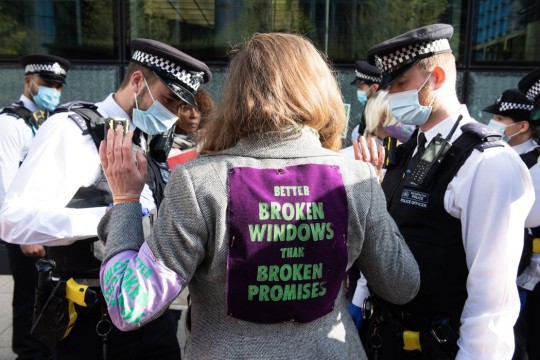
What would you say to critics of Extinction Rebellion, who are maybe more sceptical and don’t believe that radical action can result in progress? Or maybe don’t believe that there’s a climate issue at all?
Clare Farrell: I would hope that our trial has shown where ordinary people’s heads are at. It proves that the reality we live in – in terms of what’s being done at a corporate level, and what’s being done at a government level, and the rhetoric of Rishi Sunak – I hope that this is just proof that all of that is completely out of step with the general public. The general public don’t want their kids to die. They don’t want to live in a world that collapses. More and more people realise that that is precisely what is gonna happen. And they don’t want it!
I think there’s something to be said for these kinds of actions which can be an awakening for people. People are always complaining about tactics, saying people don’t like being disrupted or they don’t like what you’re doing because it’s annoying – but if you can see that someone’s in mortal danger, it’s very normal to want to tell them. I think it’s also proof that when people spend the time having an in-depth conversation about what’s taking place, there’s no question in people’s minds about what is the right thing to do. I hope so, anyway.
I hope so too. Those are actually all the questions that I had, but is there anything else that you’d like to add?
Clare Farrell: One thing which is on my mind a lot at the moment has to do with faith. I’m not a religious person, but my reflections since the trial have been quite a lot about how faith exists for me and also how it seems to be very lacking in our wider society in Britain. We live in a materialist, cynical context, which is enormously problematic because I’ve spoken to a lot of people over the last six years who’ve said to me, ‘it’s nice for you to try, but realistically, you’re never going to win – it’s too big, it’s too difficult, the power is too entrenched’. I feel like one of the key requirements for us is to find a sense of faith and in that understanding ourselves to be part of a greater whole, and not just discreet little beings that are separate from one another.
I feel really extremely lucky to have had an experience like this where we were able to win a trial and go home and think, ‘oh, right, what do I do now?’, because I thought I was gonna be in prison for Christmas. What do we do with our freedom?
The HSBC 9 are crowdfunding to cover their remaining legal costs and raise money for other activist groups’ legal costs. You can donate here. You can also read an open letter written in support of the HSBC 9 here.
39 notes
·
View notes
Text
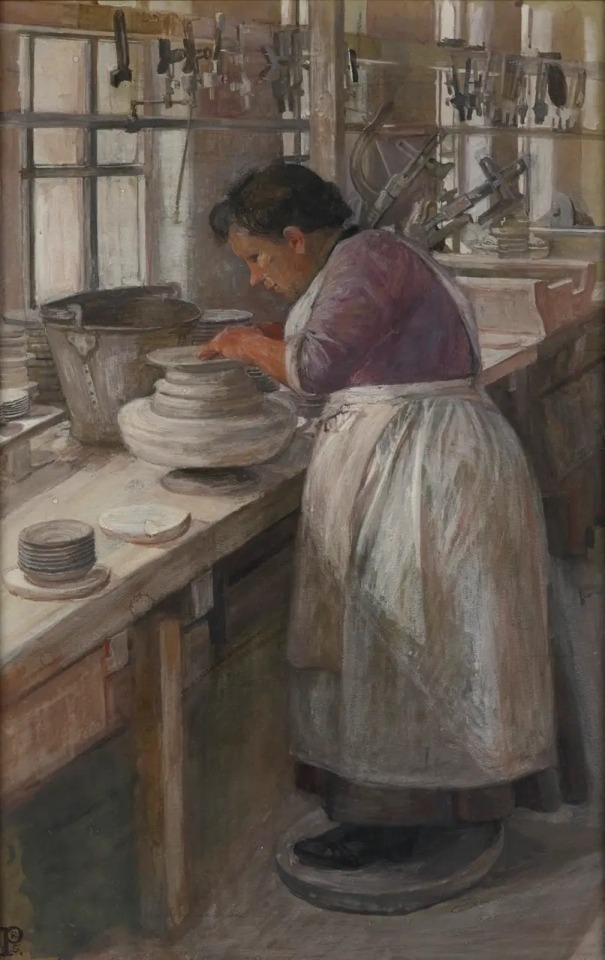
Sylvia Pankhurst - An Old-fashioned Pottery Turning Jasper-ware (1907)
Sylvia Pankhurst’s lifelong interest was in the rights of working women and she made a profound impact on the fight for women’s rights both as an artist and a campaigner. Trained at the Manchester Municipal School of Art and the Royal College of Art, she was a key figure in the work of the Women’s Social and Political Union (WSPU), set up with her mother Emmeline and sister Christabel in 1903, using her artistic skills to further the cause. Pankhurst designed badges, banners and flyers for the WSPU. Her symbolic ‘angel of freedom’ was essential to the visual image of the campaign, alongside the WSPU colours of purple, white and green. As the suffrage campaign intensified she struggled to balance her artistic and political work, and in 1912 she gave up art to devote herself to the East London Federation of Suffragettes, the organisation she founded to ensure that working-class women were represented in the suffrage campaign.
In 1907 Pankhurst spent several months touring industrial communities in Northern England and Scotland, documenting the working and living conditions of women workers. Living in the communities she studied, she painted and wrote about industrial processes and the women who performed them. Her combination of artworks with written accounts provided a vivid picture of the lives of women workers and made a powerful argument for improvement in working conditions and pay equality with men. She painted in gouache, which she found ideal for working quickly under factory conditions. Pankhurst’s detailed account of working conditions and wages was published as an illustrated article, ‘Women Workers of England’, in the London Magazine in November 1908, and as a series of articles on individual trades in the WSPU journal Votes for Women between 1909 and 1911. These highlighted difficult working conditions and the differential between men’s and women’s wages. Her studies of women at work were unusual for the time in their unsentimental observation and their focus on female workers as individuals rather than stock figures in genre scenes, as had been so often the case in British art up to this point. Historian Kristina Huneault has observed that Pankhurst recognised ‘the women’s crucial presence within the industrial arena, their economic agency, their productive activity and their public community’ (Huneault 2002, p.3).
Pankhurst made a number of paintings in the Glasgow cotton mills and also visited the Staffordshire potteries, where she made a group of studies in which she contrasted the working conditions in different factories. As seen in An Old-fashioned Pottery Turning Jasper-ware, she observed how women workers were often restricted to the lower-paid unskilled jobs, working as assistants to the men who performed more skilled and highly-paid operations: ‘In the potteries I also saw the subordination of women workers. A woman was turning the wheel for the thrower, a woman was treading the lathe for the turner: each was employed by the man she toiled for – the slave of a slave, I thought!’ (Pankhurst 1938, p.290.) (source)
71 notes
·
View notes
Text

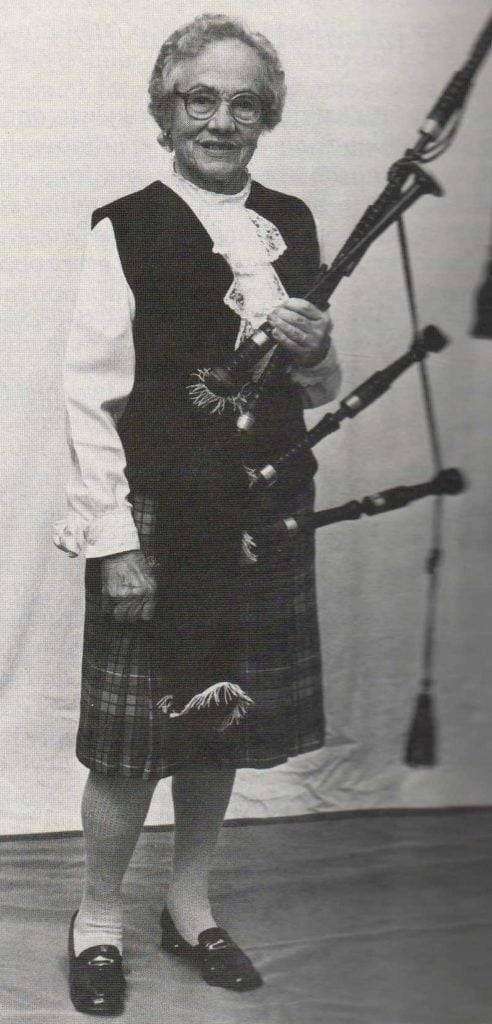
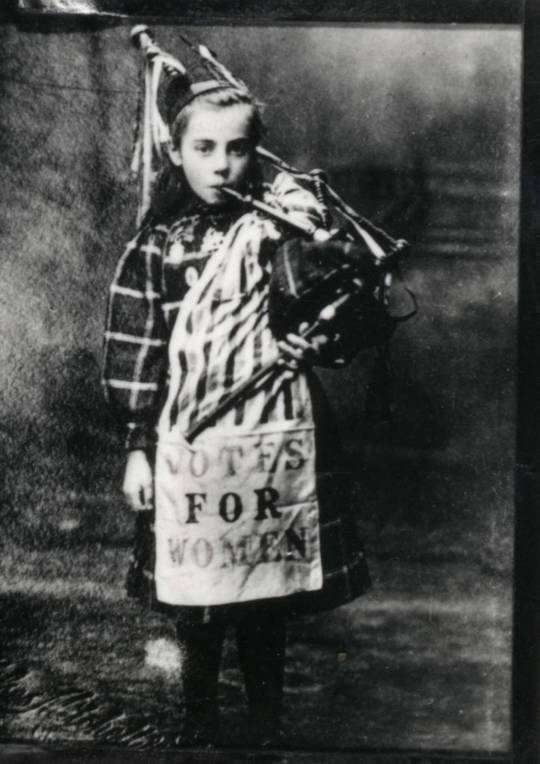
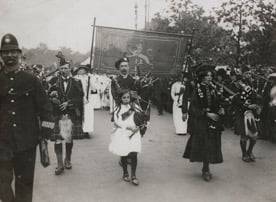

July 13th 1900 saw the birth of Elizabeth “Bessie” Watson in Edinburgh.
Born just off the Grassmarket, at 11 The Vennel to Agnes Newton and Horatio Watson, Bessie did not take long to make her mark in the world, at the tender age of 9 she combined her two greatest loves: bagpiping and woman’s suffrage, the latter makes her arguably the youngest in Scotland, if not the world.
When she turned seven, Bessie’s aunt Margaret contracted tuberculosis – an incident which would change the youngster’s life forever. Margaret lived with the family, and Bessie’s parents, worried that she might fall ill to the contagious disease, encouraged her to take up the bagpipes in a bid to strengthen her weak lungs. Her first set of pipes was specially-produced according to her diminutive stature as she was too small to properly inflate an adult-sized bag. The half-sized set of pipes was purchased from Robertson’s pipe makers at 58 Grove Street. “I hurried home from school and carried it, in a brown paper parcel down to my (music) teacher”, Bessie recalled. As one of the very few female bagpipe players in the world at that time – not to mention one of the youngest – Bessie took to her new instrument with great enthusiasm.
Bessie had more than her bag pipe playing to make her worthy of a post here, while walking with her mother through the streets of Edinburgh, Scotland, Bessie stopped to look at the window of the Women’s Social and Political Union office. Bessie became excited about the idea of women receiving the right to vote, even though she wouldn’t be able to vote for many years.
Bessie realized that her talents could help promote votes for women. She would run from school each day to play her bagpipes outside of the Calton Jail in Edinburgh for fellow suffragettes in prison.
At the first suffrage pageant she performed at, she wore a sash with the words “Votes for Women” as she performed with her bagpipes. At the height of the suffragette movement, Bessie was playing at major demonstrations and parades for the Women’s Social and Political Union, including the famous procession through Edinburgh on 9th October 1909. On that day a large crowd watched as hundreds of banner-laden ladies, wearing the suffragist colours of purple, white and green, marched down Princes Street before congregating at Waverley Market for a rally led by Emmeline Pankhurst. Watson rode on a float beside a woman dressed as Isabella Duff, Countess of Buchan in her cage! Isabella is famed for crowning Robert the Bruce at Scone when he seized the Scottish crown, she was later captured with the Bruce family and held prisoner in a cage in the open air at Berwick for four years.
Back to oor Bessie, who just a ten year-old she travelled to London to play her bagpipes in a women’s march on June 17th, 1911. J ust a few weeks later, for George’s state visit to Edinburgh, Bessie, leading the 2nd Edinburgh Company of the Girl Guides, received recognition from the king himself as she raised her salute. Having secured regal acknowledgement in time for her 11th birthday, Scotland’s youngest female piper continued in her quest to support women’s rights, accompanying inmates bound for Holloway Prison to Waverley Station and playing the pipes as their trains departed.
For the part she played in Edinburgh’s historic women’s rights pageant of 1909, young Bessie received a special gift from one very prominent individual. Christabel Pankhurst (daughter of Emmeline) came to Edinburgh to address a meeting at the King’s Theatre and Bessie was invited to attend. During the evening she was presented with a brooch representing Queen Boadicea (Boudica) in her chariot, as a token of gratitude for her help in the pageant.
During WWI, Bessie was just a teenager and used her talents to make a difference in other ways. She began helping the Scots Guard to recruit army volunteers by playing her bagpipes
In 1926 Bessie moved with her parents to a new house on Clark Road, Trinity where she would remain for the rest of her days. Following her marriage to electrical contractor John Somerville at the end of the Second World War, Bessie devoted her life to teaching music and foreign languages. Former neighbours recall that, even into her late eighties, Bessie continued to play her bagpipes at 11am every morning. It was something she had always done.
Bessie died in 1992, two and a half weeks short of her 92nd birthday. Over the course of her long life she had experienced almost a century of social progression and upheaval, and had played her part in changing the world for the better.
53 notes
·
View notes
Text
brown/black eyes is MY canon. he is a sloe-eyed whore to me.
hazel is kinda real ngl theon is the kinda pick me bitch to go ough idk what my eye colour is... sometimes its green sometimes its golden brown and in some lights in blue but omg people always tell me i have golden flecks too 🤪 he's very biracial-with-light-eyes vibes
if you pick blue i respect your suffrage and right to vote but know that i am sending you evil psychic thoughts to harm you.
25 notes
·
View notes
Note
who is spreading the lie that white feminists gatekeep rights away from brown women? in america black men kept women from voting rights to begin with.
“White supremacy will be strengthened, not weakened, by women’s suffrage.” - Carrie Chapman Catt
“What will we and our daughters suffer if these degraded black men are allowed to have the rights that would make them even worse than our Saxon fathers?” - Elizabeth Cady Stanton
“You have put the ballot in the hands of your black men, thus making them political superiors of white women. Never before in the history of the world have men made former slaves the political masters of their former mistresses!” - Anna Howard Shaw
“I do not want to see a negro man walk to the polls and vote on who should handle my tax money, while I myself cannot vote at all…When there is not enough religion in the pulpit to organize a crusade against sin; nor justice in the court house to promptly punish crime; nor manhood enough in the nation to put a sheltering arm about innocence and virtue—-if it needs lynching to protect woman’s dearest possession from the ravening human beasts—-then I say lynch, a thousand times a week if necessary.” - Rebecca Ann Latimer Felton.
“The enfranchisement of women would insure immediate and durable white supremacy, honestly attained, for upon unquestioned authority it is stated that in every southern State but one there are more educated women than all the illiterate voters, white and black, native and foreign, combined. As you probably know, of all the women in the South who can read and write, ten out of every eleven are white. When it comes to the proportion of property between the races, that of the white outweighs that of the black immeasurably.” - Belle Kearney
“Alien illiterates rule our cities today; the saloon is their palace, and the toddy stick their scepter. The colored race multiplies like the locusts of Egypt.” - Carrie Chapman Catt
“It is positively unsafe to allow young white women to walk alone on the highway, or to be left at home without male protectors. The brutal lust of the half-civilized gorillas seems to be in-flamed to madness —for five lynchings took place in Georgia for the crime of rape in the week preceding my address at Tybee.” - Rebecca Ann Latimer Felton
yessss queen lets keep dismissing white women's racism as somehow on men of colour. men of colour aren't the only people who have oppressed woc, white women & white men were doing it too.
106 notes
·
View notes
Text
The book I'm reading right now makes this really interesting point about the sort of split between two types of radicalism in the British Isles in the late 18th century--basically that there was a type of radicalism that said "we want universal manhood suffrage" and a type that said "we want universal* manhood** suffrage." There was the first one that was what you would expect with those words, they were sincerely asking for universal suffrage for all men (and sometimes women too), regardless of wealth, skin colour, religion, etc, in a literal sense as we would think of it today, but there was also the second one, which was asking for the vote for everyone they considered to be men in a political sense. Men in a political sense here meant being considered a man legally at the time, which itself meant having a certain amount of capital/property, being specifically Protestant Christian but NOT Quaker, and being financially free standing--couldn't be a slave, couldn't be a worker for someone else, etc etc. Typically, the second type was common among the wealthy Dissenters of England and Scotland who were trying to get laws discriminating against them based on religion repealed, and among the politicians, and the first type was common among the poorer Dissenters, most Dissenters in Ireland, many Dissenters in Scotland, the working classes in general, and Catholics and Quakers everywhere. So when you see something from the late 18thc from England or Scotland or Ireland or Wales that references "manhood," you've got to use context to figure out if they meant manhood literally or manhood politically. Much to think about.
28 notes
·
View notes
Text
I will never understand why people love the Titanic (1997) movie so much.
If you want a Romeo & Juliet featuring Leo DiCaprio there's Romeo + Juliet.
Jack and Rose are boring (yeah, I said it), the CGI ship is a different colour than the model ship they filmed on (or at least it was in theatres), the present day stuff was boring and unnecessary and contributed to the movie being an hour too long.
The only interesting character was Molly Brown, an actual person who was more interesting than Jack and Rose combined. IDC about the ingenue who is engaged to a Rich Bad Man and wants freedom through having an affair with Poor Good Man before her marriage. Tell me everything about the woman who could have married rich but married for happiness and then got rich and grew apart from her husband once they were rich, who got on a lifeboat and then threatened to throw a man overboard when he wouldn't go back to try and rescue more survivors, formed a committee on the rescue ship to make sure that the second and third class rescuees were taken care of, leveraged her fame afterward to promote causes like women's suffrage and raise money for charities.
Give me a character who has her own motivations and dreams. I'm sure there are folks in second and third class with equally interesting stories, as well. They only have to be interconnected by all being on the same ship.
Anyway, don't @ me because all my high school friends loved it, trust me I have heard it before. You do you, I can love you as a mutual and at the same time not understand why you like a thing I don't particularly care for.
#listen i saw it on opening weekend at the theatre#the music was good#the costumes were good#im not saying it needed to be a documentary#and i love a good romance#but idk i found it boring#but all power to those of you who enjoy it
2 notes
·
View notes
Text
Jan 1st 2021/May 11th 1935
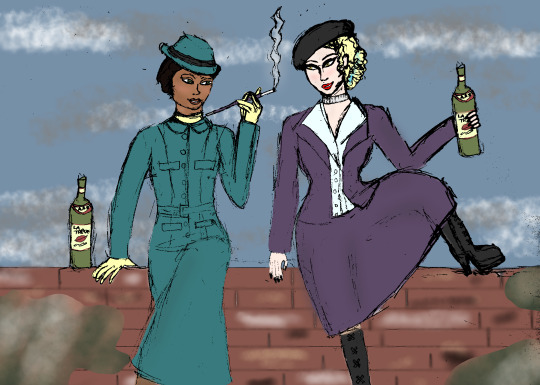
Asha and Casey after time jumping to a suffrage protest in 1930s France to burn some voting posters
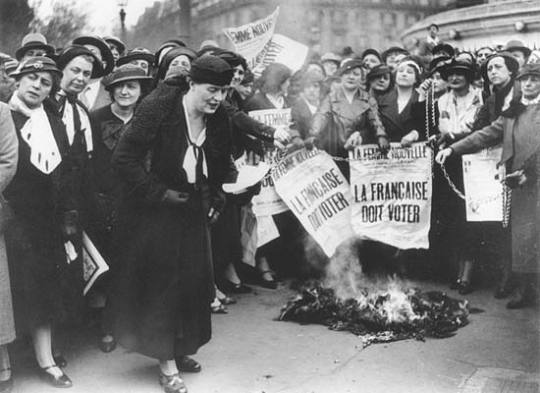
Some of my inspo/analysis below if anyone finds that interesting.
I originally imagined both their suits as like shades of beige/grey/brown but when I was looking for images of suits I found a lot of darker colours so I thought why not give them something that fits them better?
For Asha's look:

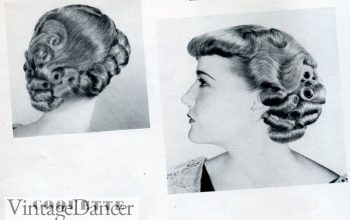

I was looking up Asha's mission today so recalled that she does sometimes smoke. One side of that hairstyle resembles her bubble braid and is a style done with long hair because she wouldn't cut it for a mission. The suit matches some of the seams as her main outfit, as does having a high neck. She has gloves for accuracy.
For Casey's look:
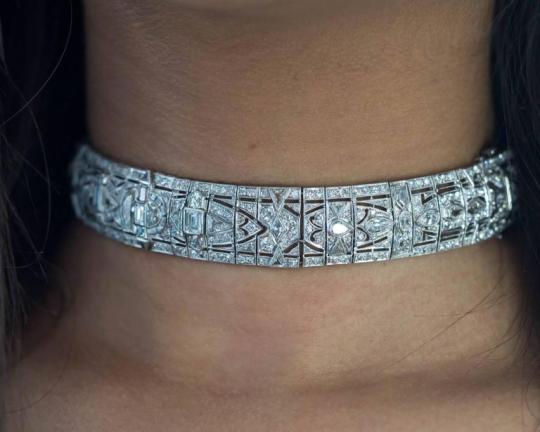
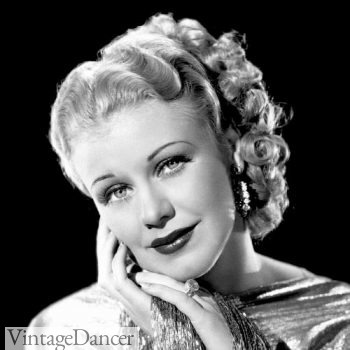

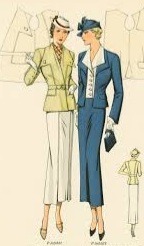
(Plus deliberate anachronisms because it's Casey)
She had to have a choker so I looked up an era-appropriate one, again needed to style her hair without cutting it (you can see a hint of the blue curled into the side to try and conceal it). She has a beret because I already wrote in the chapter she had one, I implied she had it because France but it's actually spot on for the 1930s. And a more open suit like her spacesuit in a slightly muted purple, I would've rolled her sleeves up but it would have exposed her Time Travel Unit so I decided against it. She's not wearing gloves and she's got the same super high boots she wears everywhere.
The wine is called La Trêve(the truce) because them finally getting along is unfortunately temporary at this point, same with the storm clouds coming in.
If I'm going to keep the time travel canon (blatantly already have) I'm at least attempting to do it right :)
#asha odekar#sr boss: casey clark#post-sriv#saints row iv#time travel#yeah i snuck a load of overanalysis onto a picture hehe sorry#it's just that no-one notices these little things#which is fair i probably don't notice them in other people's#but they can be interesting :)#saints row#saints row boss#is this the first time i've (successfully) drawn asha? i think so#stuff i drew
3 notes
·
View notes
Text
What’s wrong with White Feminism?
When I truly started becoming interested in the feminist movement, I noticed that women like the American suffragettes (especially Alice Paul) were being praised for their “groundbreaking”achievements.
However, there are things in the shadows that people rarely want to put to light about this movement. Through deep research, I found that there were black women who were interested in becoming apart of the National American Women Suffrage Association but were turned down.
Alice Paul, when planning the march, only imagined as rally filled with white women. In essence, the NAWSA gained voting rights for white women at the expense of the black ones.
How Can We Escape White Feminism’s Grip on the Movement?
A black civil rights advocate, Kimberlé Crenshaw, encourages women to partake in intersectionality. This means that within feminism we acknowledge the different factors that keeps a marginalized group, well, marginalized. For instance, white women only face gender inequality, while women of colour have to deal with racism and sexism and queer and trans women have to deal homophobia and transphobia along with sexism.
In order to free ourselves from the bondage of white feminism, we as feminists should acknowledge these differences within the movement so that we can tackle each marginalized group’s issue.
~TheFeministVoice
August 29, 2022.
#feminism#feminist#intersectional feminism#intersectionality#riot grrrl#activism#activist#black feminist theory#white feminism#thefeministvoice
12 notes
·
View notes
Note
the ‘anti-misogyny’ m&ms are also in t*rfs’ beloved suffrage colours and idk if it’s deliberate but also it’s probably not accidental 😭
I feel like it isn't deliberate and is shitty enough on its own and that's an unfortunate accident but also I can't think of anything more t*rf than "we gave the corporate mascots gender and are using them to fight misogyny"
2 notes
·
View notes
Note
Love the anons acting like the colours are the unifier of all of woman’s suffrage ever and not just the Women's Franchise League which disbanded 1903. American suffragettes wore White, purple, and yellow. The National Union of Women's Suffrage Societies used red and white. There isn’t any such thing as a solidarity colour except maybe white as most women could afford a white dress but despite that the term suffragette isn’t even used anymore. It’s so obvious they are just using it to take away the only gendered queer term and spread queerphobia and I’m sick of people acting like it’s not.
Yeah pretty much. The variation in national suffrage movement flags and such is another point that I didn't even take the time to go into, which is really important. Like, no one is arguing that the general color palate is similar. What I'm arguing is that there's no reason to be plastering around that specific flag, which was used for a very limited time in only one country, here and now in 2022 except to hurt GQ people.
5 notes
·
View notes
Text
The plight of the writer,
to be holed up in some room for eons on end, filled with words and stories and people shouting at you from silent walls. The plight of a writer- no audience but your own mind to sustain you in the vicious mockery of your own mind. The playwrights see the people laugh and scream and cry at the things on the stage. The singer bares their soul for all who listen and the painter’s gasp and awe stricken by the beauty of creation. Writers we are of wicked breed.
There is no town square for the writer like there is the poet. No stage to stand upon or song to greet peoples ear. But yet we still paint pictures, sing songs, give tony award winning performances between the pages of our stories. Bound and dusty are we like stuck on a underground train on the way into the city, we are stuck with the plight of the writer.
Give us the bones and we will build you not just life, but legacy and legends. Lament with us the suffrage of a writer. To sit hours on end in front of our tools and them to tell us ‘fuck off’. Lament in the years we spend; waiting, lusting after the words to tell the things from our head. Plight or not- we light the way under backbones of ancient monsters, killing the king in the dark of night, a knife to your throat as the villain tells you ‘red is really your colour’.
Yet we see no astonishing riches, no gasping or awing like the painter, or standing ovation like the actor. We stay locked away in our rooms- isolated.
The plight of the writer.
4 notes
·
View notes
Photo


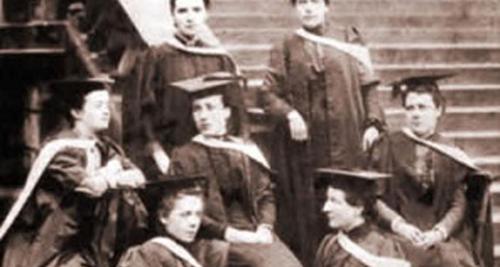
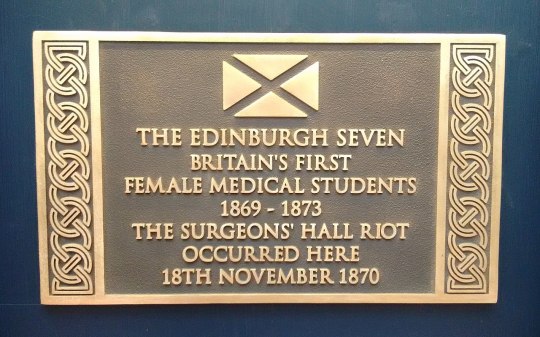
November 12th 1869 saw Edinburgh University first admit women to the study of medicine.
Sophia Jex-Blake and her friend Edith Pechy were the first to attend the prestigious medical school after much hard campaigning on Sophia’s part. Jex-Blake describes the scene here as the two friends went to take their exams……“: "On the afternoon of Friday 18th November 1870, we walked to the Surgeon’s Hall, where the anatomy examination was to be held. As soon as we reached the Surgeon’s Hall we saw a dense mob filling up the road… The crowd was sufficient to stop all the traffic for an hour. We walked up to the gates, which remained open until we came within a yard of them, when they were slammed in our faces by a number of young men.”.
A sympathetic student emerged from the hall; he opened the gate and ushered the women inside. They took their examination and passed with flying colours. Although both passed, university regulations only allowed medical degrees to be given to men. The British Medical Association therefore refused to register the women as doctors.
Jex-Blake took herself off to Ireland where she finally obtained her licence to practice from the Dublin College of Physicians. Sophia Jex-Blake then devoted her life to the cause of women in medicine - both improving the treatment of female patients and creating better opportunities for female medical education, eventually founding the revolutionary Edinburgh School of Medicine for Women.
Their strength and decency under pressure went on to inspire many others, right up to the present day. Although Jex-Blake and Petchey were the most famous and seem to get most of the plaudits, There were other women and they are collectively known as The Edinburgh Seven, the others were Mary Anderson, Emily Bovell, Matilda Chaplin, Helen Evans and Isabel Thorne.
Jex-Blake seems to have been the most successful of the seven, in June 1878 she opened a medical practice at 4 Manor Place; three months later she established a dispensary (an out-patient clinic) for impoverished women at 73 Grove Street, just round the corner from where I used to stay at Upper Grove Place. These ventures were highly successful but after the death of one of her assistants, she suffered from depression. She closed her practice and left the dispensary in the care of her medical colleagues.
She remained inactive for a time before opening Edinburgh School of Medicine for Women in 1887, in its second year the school was disrupted by disputes between Jex-Blake and several of the students who resented her imposition of strict rules of conduct. The school also struggled financially and had to be bailed out by Jex-Blake’s father.
When a rival institution, the Medical College for Women, was opened by Ina Cadell, Grace Cadell, and Elsie Inglis, former students of Jex-Blake, the Edinburgh School of Medicine could no longer compete.The school folded and closed its doors in 1898.
In 1899 Jex-Blake retired but continued to campaign for women’s suffrage until she passed away on 7th January 1912.
The Edinburgh Seven were recognised with posthumous degrees in July this year, the degrees were collected on their behalf by a group of current students at Edinburgh Medical School.The seven’s efforts eventually forced through legislation in 1877 to ensure women could study at university.
The pics show Jex-Blake on the left and Pechy on the right and a pic of The Edinburgh Seven.
#Scotland#scottish#Edinburgh#womens education#education#strong women#university of edinburgh#history#medical history
65 notes
·
View notes
Text
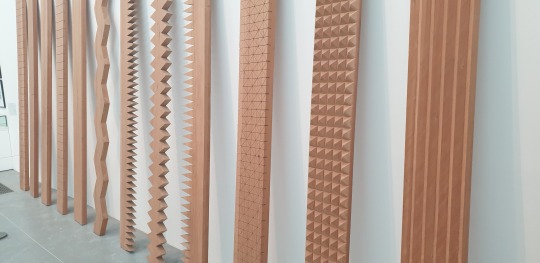
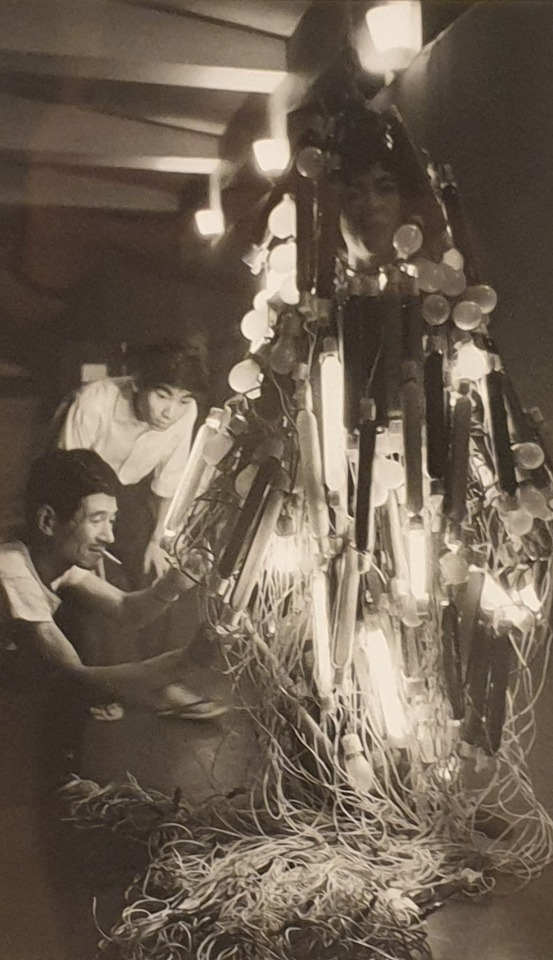




Untitled 2011
Charline von Heyl, b1960
Born Germany, Works US
A set of 12 pieces, made through different methods of print. The works are primarily monochrome, with only 2 pieces using colour, and the rest using black and white.
Mix of abstract forms
Woodcuts, silkscreen, lithography, photocopies, acrylic paint, spray paint, digital print, charcoal.
Polyester film, and paper
Sources range from post-war America to mass-produced Russian woodblock print and African textiles.
Interest in the mind’s ability to identify familiar forms
Study for Gates No. 4, 1967
Chryssa, 1933-2013
Born Greece, worked Greece and USA
This piece uses neon tubes split into sections, all bent into the shape of an “S”. The sections turn on and off in sequence.
Chryssa was one of the first artists to use neon.
Inspired by Times Square
“With it’s light and letters”
Grey plexiglass structure is intended to resemble the night sky
“I have always felt that when things are spelled out they mean less, and whe fragmented they mean more.”
The Diners, 1919
William Roberts 1895-1980
Born Britain, worked Britain, France, Italy
This piece shows a group of heavily stylised people sat at restaurant tables. All of the figures are facing inwards, towards the tables, including the waiters, and as such creates a line along the centre that splits the painting in half.
One of three decorative panel commissioned for the “Restaurant de la Tour Eiffel” in London
Each panel hung above the entrance to a different named room
One room was named “Vorticist Room” after the group of artists expressing the dynamic modern world who congregated there.
Electric Dress, 2nd Gutai Art exhibition,1956, printed 2012
Photographs by Otsuji Kiyoji 1923-2001
Born and worked Japan
Electric Dress by Tanaka Atsuko
A series of 5 photographs showing a dress made of flashing lights and wire. Printed in black and white, the dress is seen worn.
Electric Dress was a wearable artwork made from flashing lights
Hand painted bulbs in red, green, yellow, and blue. Provide bright colour
Tanaka Atsuko was one of the first Gutai artists whose practice merged art and technology
Inspired by the neon-filled japanese cities of the 1950’s
Piece can administer shocks, interfacing the wearer with the material properties of the artwork
The Workers’ Maypole, An Offering for May Day 1894 (Illustration by Walter Crane 2015)
Andrea Bowers, 1965
Born and works US
Drawn onto flattened cardboard boxes in permanent marker, this piece depicts a maypole with protest slogans written on the ribbons. The piece uses only black permanent marker, likely reflecting the use of marker and cardboard in protest.
Bowers based the drawing on an illustration by Walter Crane (1845-1915) published in the socialist magazine The Clarion in 1894.
Use of materials emphasises the traditions of political activism, materials chosen are often used by activists to construct placards today.
Bowers changed the slogans on Crane’s banners to reflect recent political issues
“Adult Suffrage” becomes “Equal Pay”, “Neither Riches Nor Poverty” becomes “Healthcare is a Human Right”
From Surface to Surface, 1971 (Remade 1986)
Susumu Koshimizu, 1944
Born and works in Japan
A series of wooden planks, all the same length but cut and in varying ways. Every cut is straight, and are all used both to shape the profile of the plank, and to affect the texture.
Investigates the substance of wood
Exposes the surface qualities through repetitive cuts
Koshimizu was a part of Mono Ha (School of Thins), resistin the embrace of technology on mid 1960’s Japanese art
Sought to explore essential properties of materials and understand “the world as it is”
1 note
·
View note
Text
#aFactADay2022
#489: Mary Lowndes was a stained glass artist and big arts-n-crafts-er who did many of the windows at Westminster Palace. she was also a big suffragette and participated in the mud march in 1907, where women from all round the country came to hyde park and marched through the mud to campaign for womens suffrage. she designed and produced many of the banners that were paraded through london, and wrote a guidebook on how to create your own, using ideas of colour theory. and in full circular fashion, the mud march is featured as a stained glass scene in window #4 in westminster palace!! (installed 2002) she is also featured in a memorial in parliament square, london.
0 notes